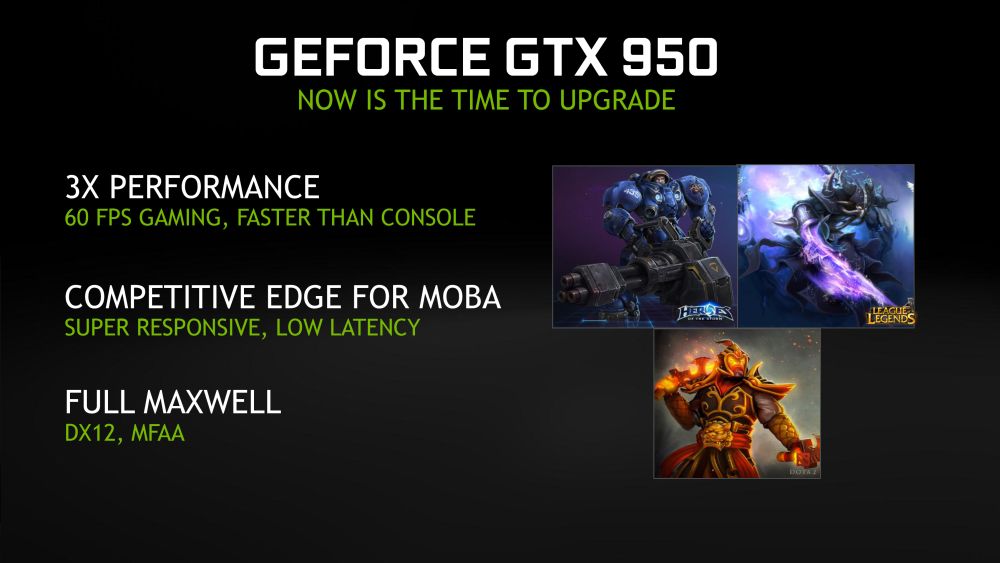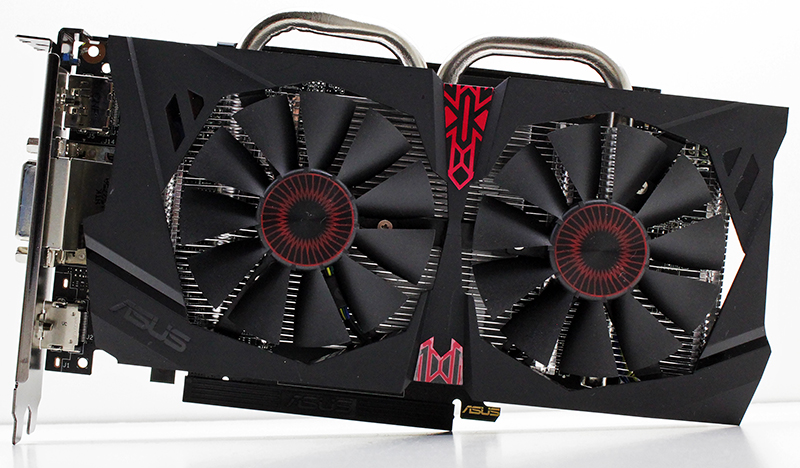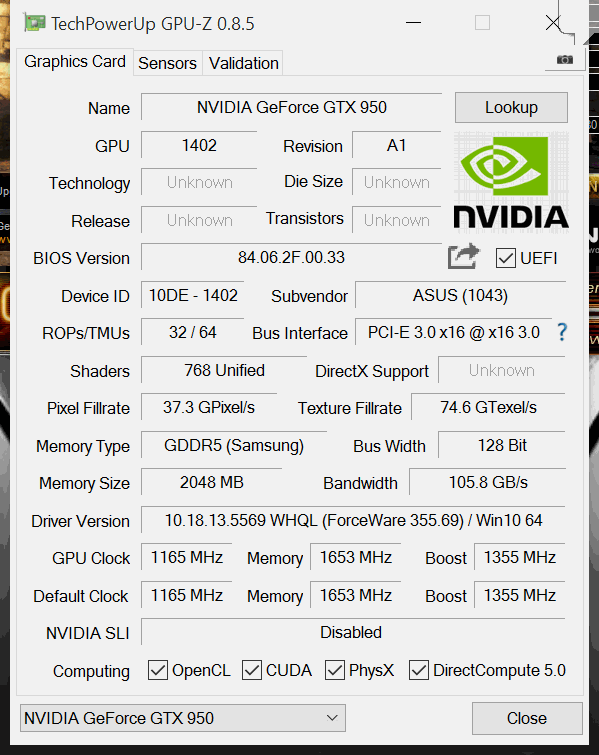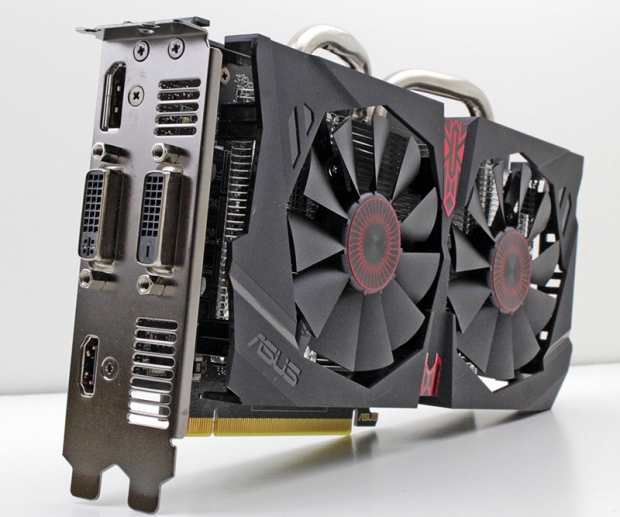Index
Review: Compact and extremely quiet during gaming
Many parameters for this entry-level to mainstream graphics card are well tuned, but the price is too high.
Nvidia recently launched its newest Geforce 900 series graphics card, the GM206-based, US $159.99 priced Geforce GTX 950. Today we will take a closer look at a factory overclocked GTX 950 made by ASUS.
Our test sample is the GTX 950 Strix (part number 90YV08V0-M0NM00) and it comes with the company’s trademark DIRECTCU II dual-fan cooler. Its factory overclock sets the GPU Base clock to 1140MHz (1165MHz OC mode) and boost clock to 1355MHz. Reference clocks are 1024MHz (Base ) and 1188MHz (Boost).The factory overclock is not highest among GTX 950 cards from other Nvidia partners, but the ASUS Strix provides great overclocking potential.
The Geforce GTX 950 is Nvidia’s second mainstream graphics card based on the new second generation Maxwell architecture. Maxwell has a great combination of performance, power-draw, and low fan-noise, and it comes with DirectX 12 support.
The Maxwell SM was rebalanced to give each processing block of CUDA cores its own dedicated resources for instruction scheduling and dispatch. This keeps the GPU’s CUDA cores fully used more often, improving workload efficiency and reducing wasted power.
The GTX 950 graphics card is based on silicon codenamed GM206. This GPU is used for the GTX 960 graphics card, but Nvidia has disabled some parts of the GPU to create the GTX 950.
Nvidia markets the Geforce GTX 950 as a card for MOBA (multiplayer online battle arena) gaming with a 60FPS. It is supposed to be super responsive with a low latency and provide DirectX 12 and MFAA support.
It will run other game genres at 1080p, including the Witcher 3 : Wild hunt, GTA V, Battlefield: Hardline, Call of Duty: Advanced Warfare and FarCry 4.
Nvidia describes the Geforce GTX 960 as a “sweet spot” graphics card. Traditionally Nvidia’s “sweet spot” cards are 60-series models such as the GTX 460, 560, 660, and 760. They offer a good price/performance ratio and the current generation can run most titles at 1080p with high detail settings.
The GTX 950 is made for gamers on budget and it comes with 25 per cent less shaders compared to the GTX 960. For a good framerate in games at 1920x1080 resolution some graphics details must be lowered. In the updated Nvidia’s Geforce GTX lineup the GTX 960 is positioned below GTX 960 but above the aging GTX 750 Ti graphics card based on the first generation Maxwell GM107 GPU.
The GTX 950GPU Base clock for the is set at 1024MHz compared with 1127MHz on the GTX 960. The memory clock for the GTX 950 is set at 1650MHz (6600MHz effective GDDR5) while memory on the GTX 960 works at 1750MHz (7000MHz effective GDDR5). Resulting bandwidths are 105.6 GB/s and 112 GB/s respectively.
The next image shows the ASUS GTX 950 Strix OC graphics card which manages to provide both good performance and silent work. Strix uses custom PCB with 220mm length.

Unlike the GTX 960, where GM206 GPU was running with 8 SMMs, for a total of 1024 CUDA cores, 64 Texture Units and 32 ROPs, the GM206 behind the Geforce GTX 950 has been cut-down to 6 SMMs. This gives a total of 768 CUDA cores, 48 Texture Units and 32 ROPs. The GM206 on the GTX 950 is paired up with 2GB of GDDR5 memory running on a 128-bit memory interface. ASUS did not change the memory clock. The GPUZ screenshot below confirms the clocks.
The typical boost clock speed is 1355MHz. The boost clock speed is based on the average Geforce GTX 950 card running a wide variety of games and applications. Note the boost clock will vary from game-to-game depending on system conditions.
With the arrival of the Geforce GTX 950, Nvidia’s Geforce GTX lineup consists of the following GPUs:
- GeForce GTX TITAN X
- GeForce GTX 980 Ti
- GeForce GTX 980
- GeForce GTX 970
- GeForce GTX 960
- GeForce GTX 950
- GeForce GTX 750 Ti

